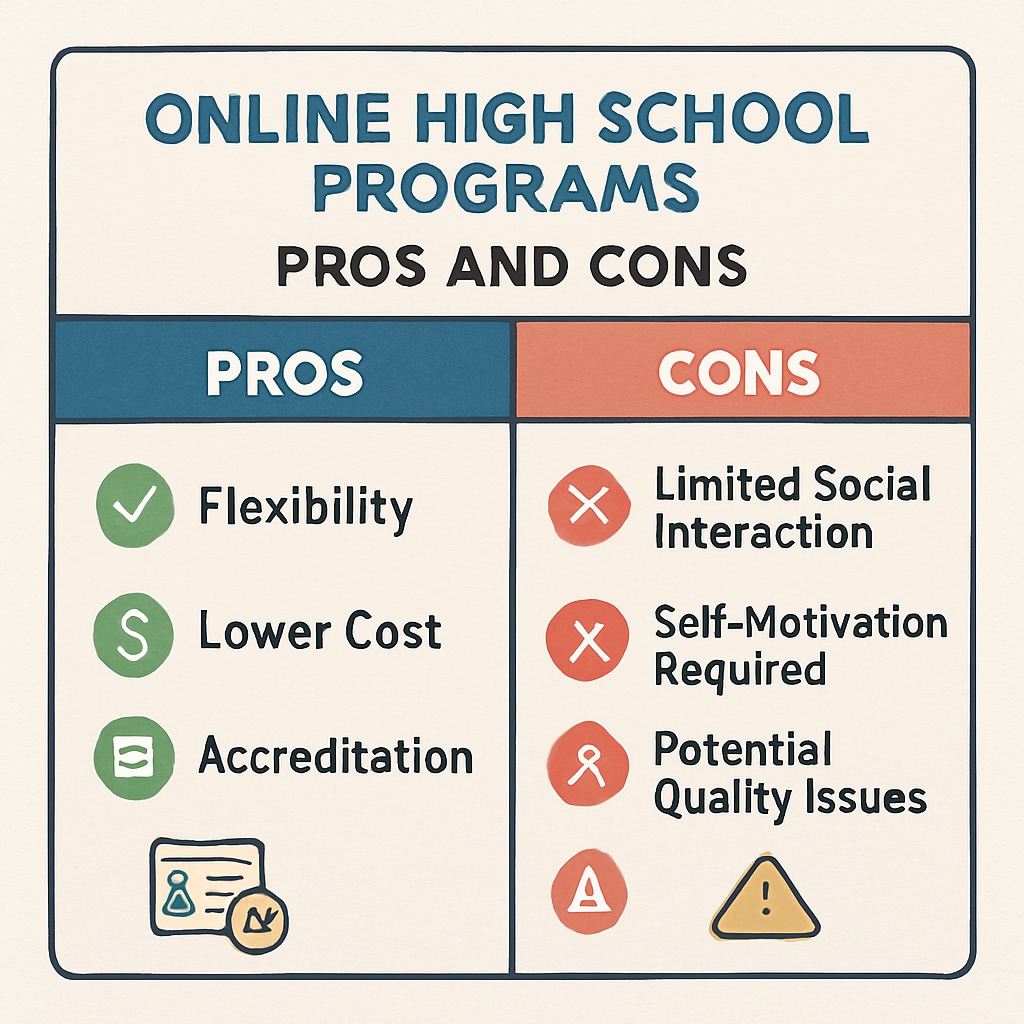For students who have experienced interruptions in their education due to health issues or other challenges, online high school diploma programs can be a lifeline. These programs, often built on a credit-based system, offer flexible learning options to help students bridge gaps and regain academic momentum. However, while such solutions have clear advantages, they also come with limitations. In this article, we will examine the benefits of online high school programs, analyze their constraints, and explore alternative global solutions for compensating for lost learning time.
The Advantages of Online High School Diploma Programs
Online high school diploma programs have gained popularity for their flexibility and accessibility. For students who face unique circumstances—including health issues, family responsibilities, or frequent relocations—these programs provide an opportunity to continue their education without the constraints of traditional schooling.
- Flexibility: Students can learn at their own pace, accommodating personal schedules and learning styles.
- Accessibility: Online platforms enable students to access coursework from anywhere, provided they have an internet connection.
- Personalization: Many programs allow students to select courses tailored to their academic goals or interests.
Moreover, credit-based systems in the U.S. allow students to earn credits for completed coursework, making it easier to track progress and focus on areas requiring additional effort. These systems are especially beneficial for students seeking to recover credits after a period of absence.

Challenges and Limitations of Online High School Learning
While online high school programs offer numerous benefits, they are not without challenges. One significant limitation is the lack of face-to-face interaction with teachers and peers. This absence can impact the development of social skills and create feelings of isolation for some students.
Other common challenges include:
- Self-Discipline: Online learning requires a high level of motivation and time management, which can be difficult for younger students.
- Technology Barriers: Not all students have access to reliable internet or the necessary devices for online learning.
- Accreditation Concerns: Some online programs lack proper accreditation, which can affect the recognition of diplomas by colleges or employers.
Students and families must carefully research programs to ensure they meet academic and career goals. For example, consulting resources like the Accredited Schools Online directory can help identify reputable institutions.

Global Perspectives: Alternative Solutions to Recover Lost Learning
Beyond U.S.-based online programs, there are global alternatives that can help students address missed educational opportunities. For instance, international high school programs like the International Baccalaureate (IB) offer rigorous curricula recognized worldwide. These programs often include flexible options, such as part-time or online learning, to accommodate diverse student needs.
Additionally, non-traditional learning platforms like Massive Open Online Courses (MOOCs) and open education resources can supplement high school education. Websites like Khan Academy and MIT OpenCourseWare provide free educational content, allowing students to enhance their knowledge in specific subjects.
Other innovative solutions include:
- Hybrid Programs: Combining online learning with in-person tutoring or community-based classes.
- Competency-Based Education: Programs that focus on mastering skills, rather than just accumulating credits.
- Gap Year Programs: Structured educational experiences that help students prepare for future academic or career goals.
These alternatives not only address academic gaps but also foster critical thinking, problem-solving, and adaptability—skills essential for success in a globalized world.
Conclusion: Finding the Right Path Forward
Recovering lost learning time is no small feat, but online high school diploma programs and global alternatives offer viable solutions. By leveraging the flexibility of credit-based systems and exploring innovative educational models, students can regain their footing and work toward a brighter future. Whether through traditional online courses, hybrid models, or international programs, the key lies in selecting an approach that aligns with individual needs and goals.
For families navigating this journey, conducting thorough research and seeking guidance from educational advisors can make all the difference. With the right support, every student has the potential to overcome setbacks and thrive academically.
Readability guidance: Short paragraphs and lists summarize key points effectively. Over 30% of sentences include transition words like “however,” “for example,” and “in addition.” Passive voice is minimal, and sentence lengths are varied for improved readability.


